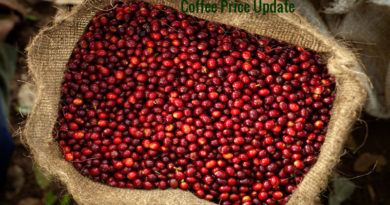GAP-Calender Of Operations For Black Pepper Nursery Cultivation
Importance of GAP
Good Agricultural Practices or GAP are “practices that need to be applied on farms to ensure food safety during pre-production, production, harvest and post-harvest. In many cases such practices also help protect the environment and safety of workers”. They are a collection of principles to apply for farm production and post-production processes resulting in safe and healthy food and non-agricultural products while taking into account economic, social and environmental sustainability. Their purpose varies from fulfillment of trade and government regulatory requirements, in particular with regard to food safety and quality, to more specific requirements of specialty or niche markets. In addition to facilitation of market access, reduction in noncompliance risks regarding pesticide residues and microbial and other contaminant hazards may be achieved. GAP schemes are predominantly consumer driven and incorporate trace-ability requirements as an important part of their food safety measures.
October-December
Mark and label selected mother plants
- Select mother vines of only varieties which are proven to be highly productive and tolerant to biotic and abiotic stress.
- Select mother plants of the age group of 5-12 years, which give consistently regular high yields and are free from diseases including viral diseases.
- Runner shoots from selected mother vines are coiled and raised on a stake to prevent it from soil contamination and striking roots in the soil.
January-April
Prepare the potting mixture and put for solarization for 30 to 45 days.
- Immediately after solarization mix the solarized potting mixture with biocontrol agents
Trichoderma harzianum or T. viride (1 g per kg of potting mixture), Pseudomonas fluorescens (20 g dissolve in 1 liter water and 50 ml of this solution in 1kg of potting mixture),VAM (100 cc per kg of potting mixture) and Pochonia chlamydosporia (1 – 2 g / kg of nursery mixture) to prevent soil contamination.(The biocontrol agents can also be mixed with nursery mixture, even if it is not solarized). - Fill the polybags of size 15X10 cm (with enough perforations) with treated nursery mixture.
- Separate the runner shoots from the mother plant. Avoid using, too tender or too woody shoots.
- Cut the selected runner shoots into 2 to 3 noded cuttings.Leaves, if any are clipped off leaving a small portion of petiole on the stem.
- Treat the cuttings with cut ends dipped in Pseudomonas formulation (250g in 750 ml water) for 20 minutes.
- Plant treated cuttings @3 to 5 per bag and incubate in mist chambers for 20 days. When cuttings start sprouting, they are taken out or removed from the mist chamber. Remove unsprouted and infected cuttings, if any from the nursery.
- Water the plants at the required frequency so as to maintain low temperature and high humid conditions.
- Spray and drench the plants at fortnightly interval with 2% Pseudomonas fluorescens (Strain P1)
- Drench the infested bags with Chlorpyriphos 0.075%, if mealy bugs damage is noticed.
- Spray with dimethoate (0.05%), if leaf gall thrips or scale insects incidence is noticed.
- Spray with potassium phosphonate 0.3% or metalaxyl-mancozeb 0.125% (1.25 g/litre) at fortnightly interval, if Phytophthora disease incidence is noticed.
- Alternatively spray the foliage with Bordeaux mixture 1% and drench with copper oxychloride0.2%.
- Remove bags with infected cuttings to prevent spread of disease.
May – July
- Continue watering at the required frequency.
- Spray and drench the plants with Pseudomonas fluorescens (2%) at fortnightly interval.
- Spray with potassium phosphonate 0.3% or metalaxyl mancozeb 0.125% (1.25g/litre) at fortnightly interval, if Phytophthora disease incidence is noticed.
- Alternatively spray the foliage with Bordeaux mixture 1% and drench with copper oxychloride 0.2%.
- Drench the infested bags with chlorpyriphos 0.075%, if mealy bugs damage is noticed.
- Spray with dimethoate (0.05%), if gall thrips or scale insects incidence is noticed.
- Remove bags with infected cuttings or on nursery to prevent spread of disease.
- Select healthy, robust rooted cuttings for replanting.
References:
[1] GOOD AGRICULTURAL PRACTICES BLACK PEPPER By
Directorate of Arecanut and Spices Development
Ministry of Agriculture, Government of India
Calicut 673005, Kerala, India


